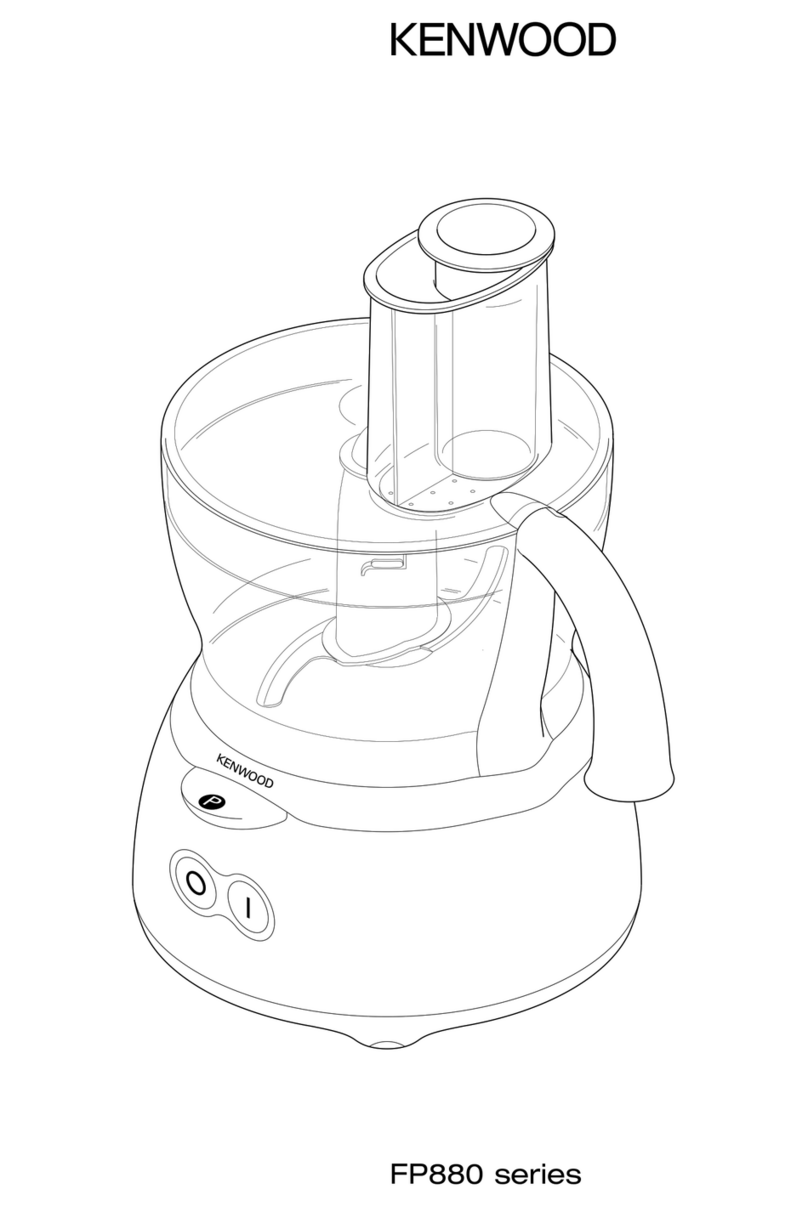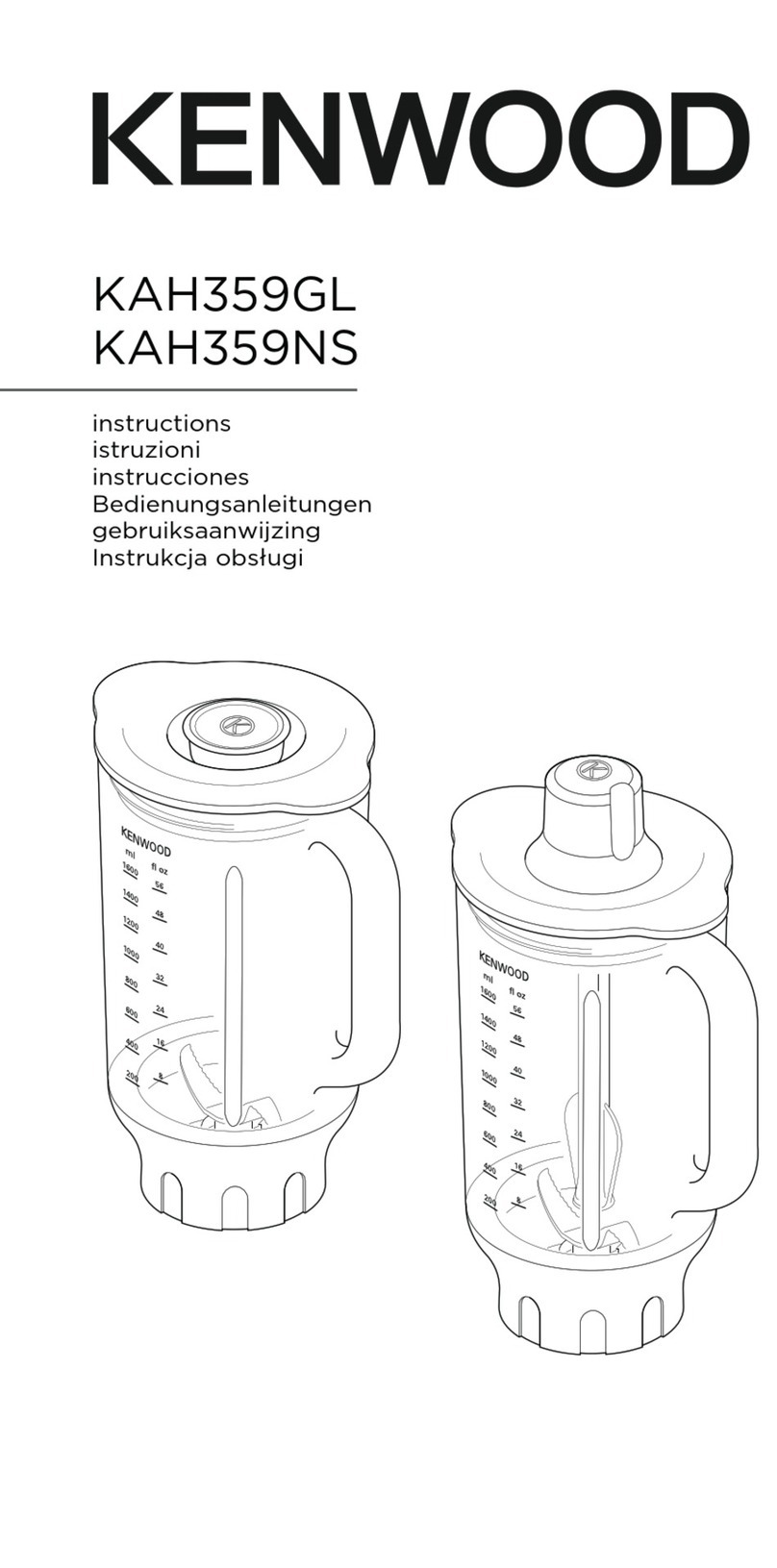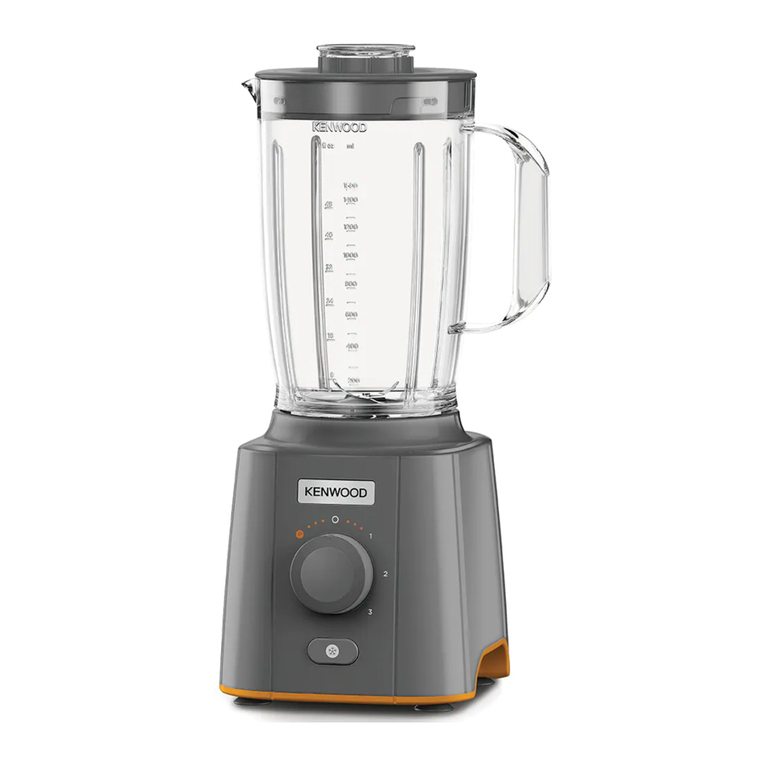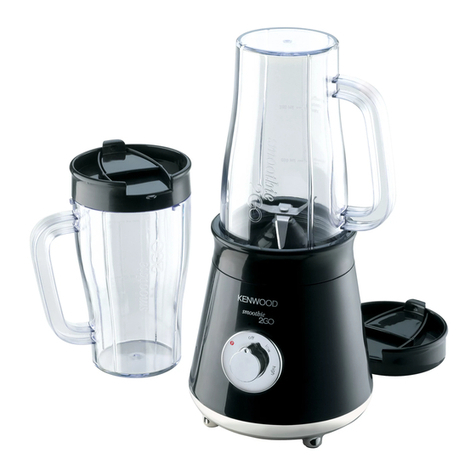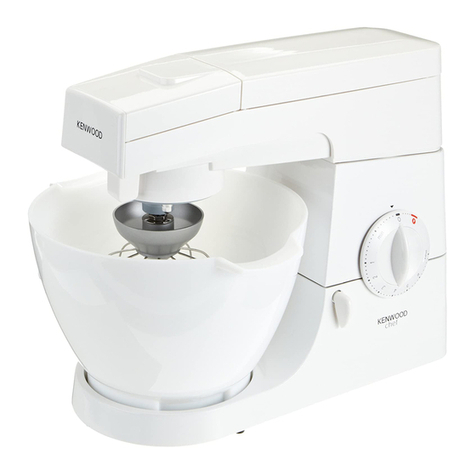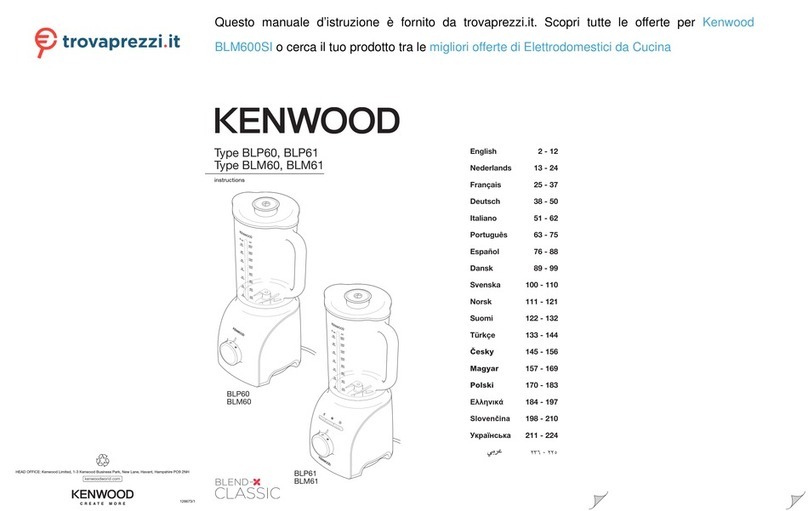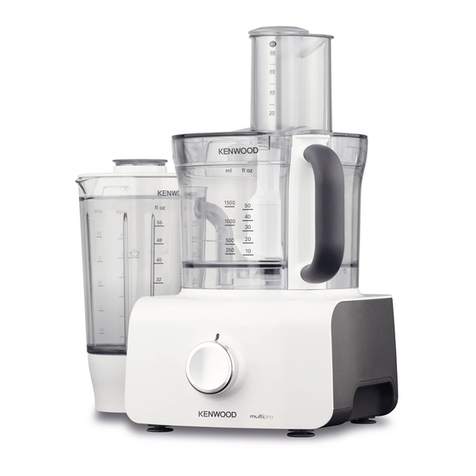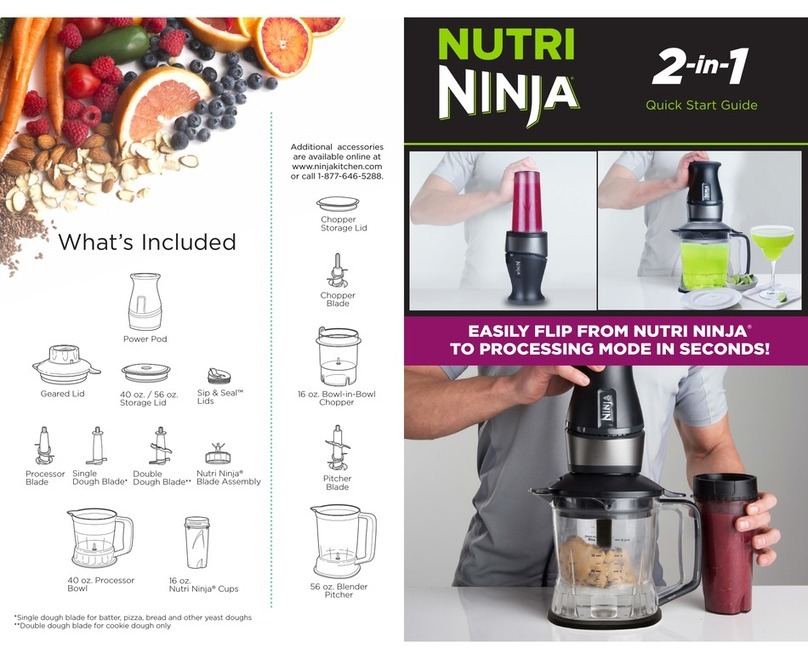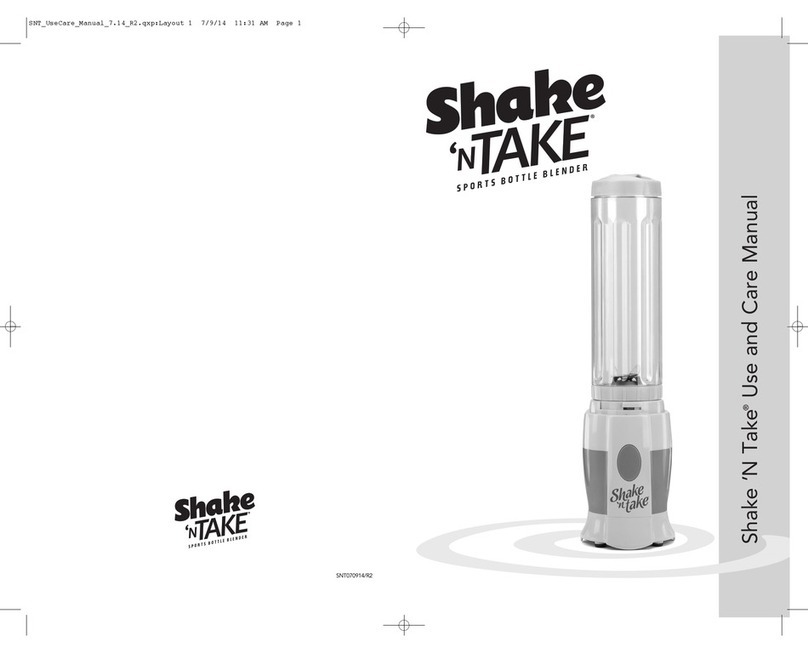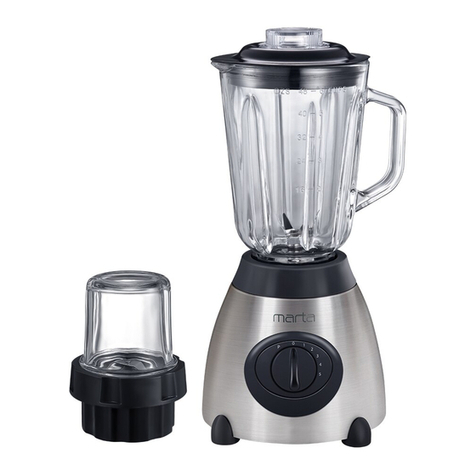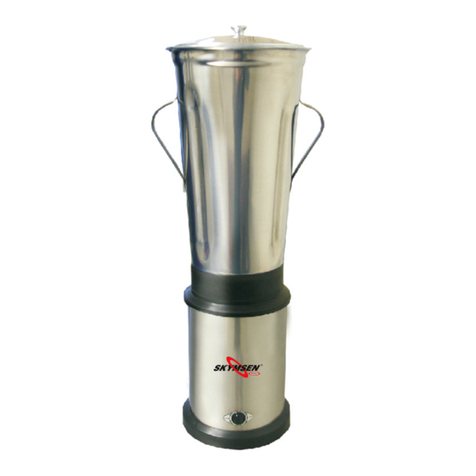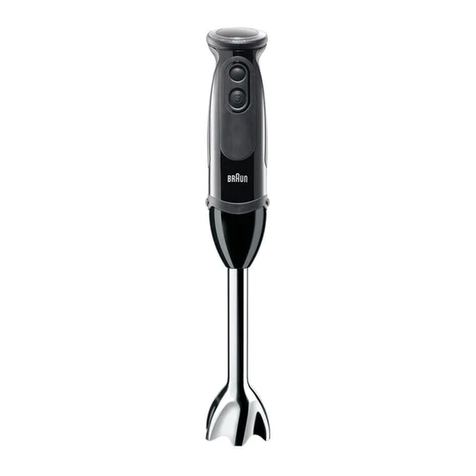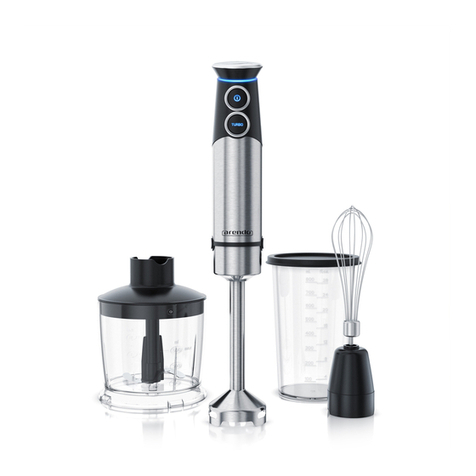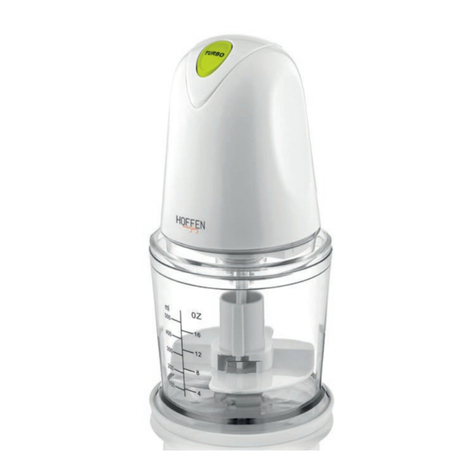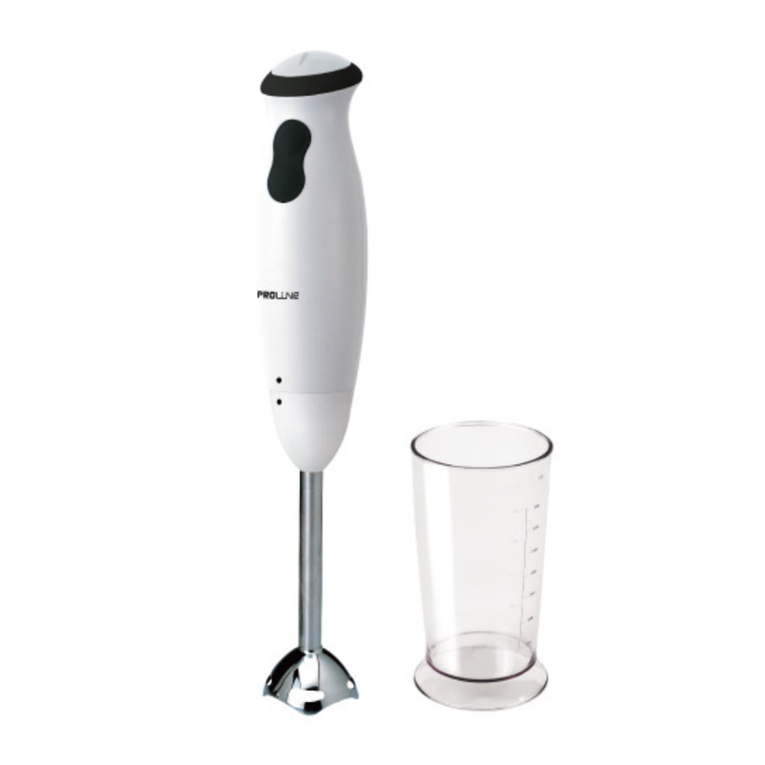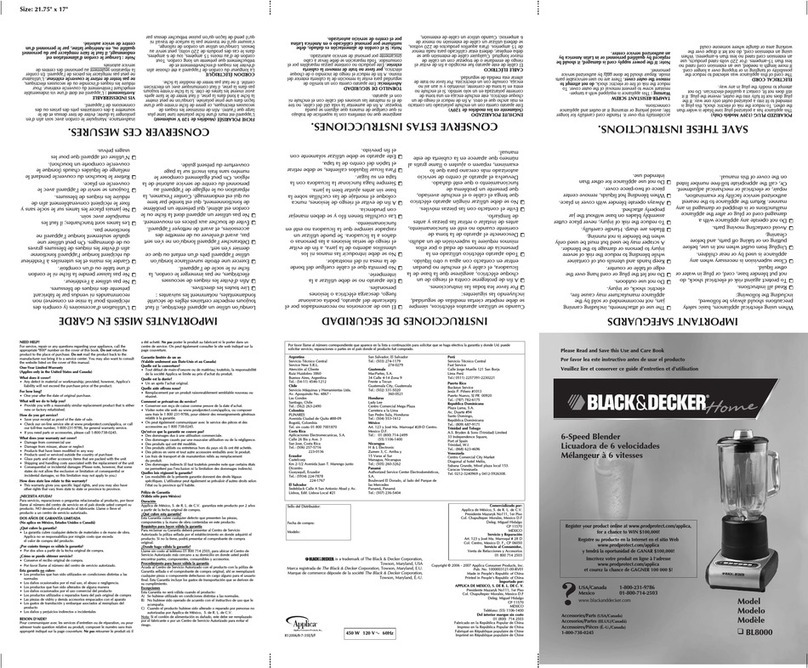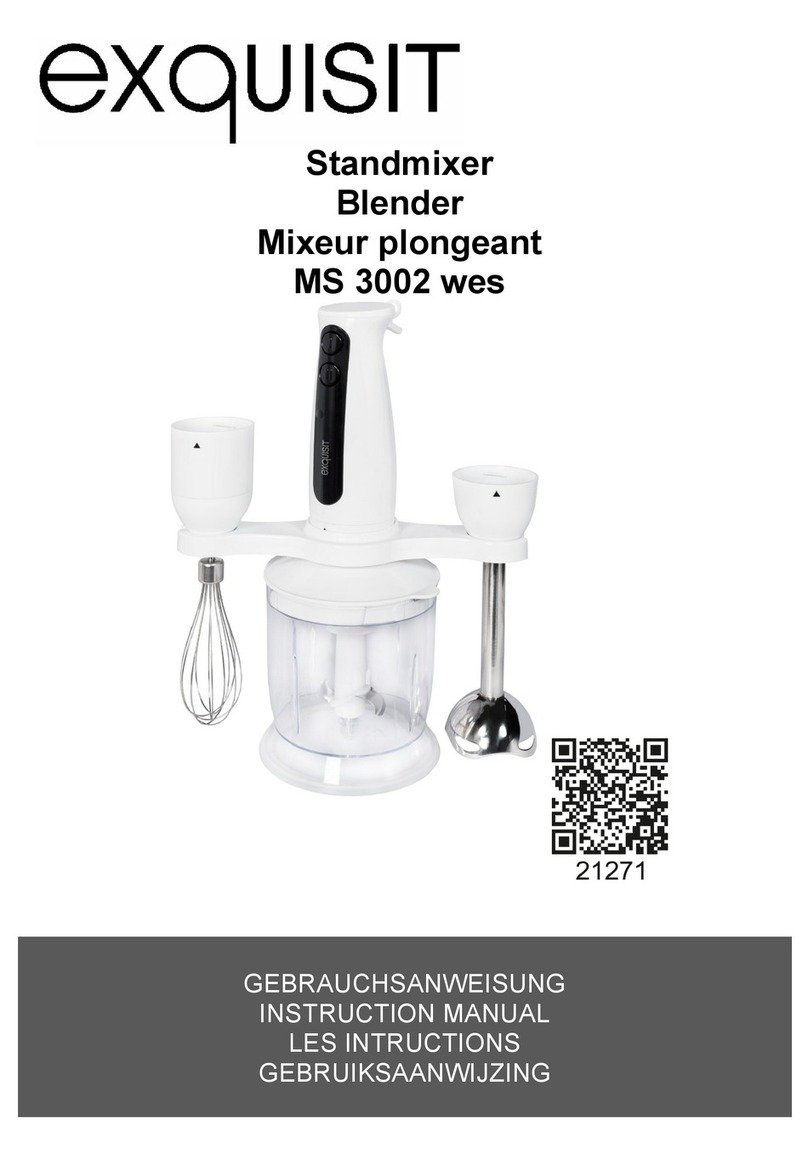
the mixing tools and some of their
uses
beater
lFor making cakes, biscuits, pastry, icing, fillings,
clairs and mashed potato.
whisk
lFor eggs, cream, batters, fatless sponges, meringues,
cheesecakes, mousses, souffl s. Don’t use the whisk
for heavy mixtures (eg creaming fat and sugar) - you
could damage it.
dough hook
lFor yeast mixtures.
to use your mixer
1 Press down on the head release lever and raise
the mixer head until it locks into position.
2 Select a tool and push into the tool socket .
lAlways ensure the guard is fitted onto the shaft of the
dough hook before inserting into the outlet. Once
inserted fit the guard to the mixer outlet to prevent
food ingress.
3 Fit the bowl into the base and turn clockwise to lock
into position .
4 Press down on the head release lever and lower the
mixer head until it locks into position.
5 Plug into the power supply then switch on and turn
the speed switch to the desired setting. To switch off
turn to ‘0’.
lSwitch to pulse for short bursts
6 Unplug from the power supply.
7 Raise the mixer head and whilst holding it steady, pull
the tool from the outlet.
important
lSome movement of the mixer head is
normal when mixing heavy loads such as
bread dough.
lIf the mixer head is raised during operation, the
machine will stop working straight away. To re-start
the mixer, lower the mixer head, turn the speed
switch to the off position, wait a few seconds and
then re-select the speed. The mixer should resume
operating straight away.
lIf for any reason power to the mixer is interrupted and
the machine stops working, turn the speed switch to
the off position, wait a few seconds and then re-select
the speed. The mixer should resume operating
straight away.
lThe mixer will not operate unless all the
outlet covers are correctly fitted to the
machine.
lIf you hear the machine labouring either switch off and
remove some of the mixture or increase the speed.
lAlways remove attachments fitted to the medium and
high speed outlets before raising the mixer head.
hints
lSwitch off and scrape the bowl with a spatula when
necessary.
lEggs at room temperature are best for whisking.
lBefore whisking egg whites, make sure there’s no
grease or egg yolk on the whisk or bowl.
lUse cold ingredients for pastry unless your recipe
states otherwise.
lWhen creaming fat and sugar for cake mixes, always
use the fat at room temperature or soften it first.
lYour mixer has been fitted with a ‘soft start’ feature to
minimise spillage. However if the machine is switched
on with a heavy mixture in the bowl such as bread
dough, you may notice that the mixer takes a few
seconds to reach the selected speed.
points for bread making
important
lNever exceed the maximum capacities stated - you
will overload the machine.
lSome movement of the mixer head is normal when
mixing heavy loads such as bread dough.
lThe ingredients mix best if you put the liquid in first.
lAt intervals stop the machine and scrape the mixture
off the dough hook.
lDifferent batches of flour vary considerably in the
quantities of liquid required and the stickiness of the
dough can have a marked effect on the load imposed
on the machine. You are advised to keep the machine
under observation whilst the dough is being mixed;
the operation should take no longer than 6-8 minutes.
5





